#Bigg's Killer Whale
Explore tagged Tumblr posts
Text

Bigg's killer whale Orcinus orca
With Pacific harbor seal Phoca vitulina richardii
Observed by marciecjohn, CC BY-NC
#Orcinus orca#Bigg's killer whale#Cetacea#Delphinidae#cetacean#dolphin#whale#Phoca vitulina richardii#Pacific harbor seal#carnivoran#pinniped#North America#Canada#British Columbia#Pacific Ocean#Clayoquot Sound
136 notes
·
View notes
Text
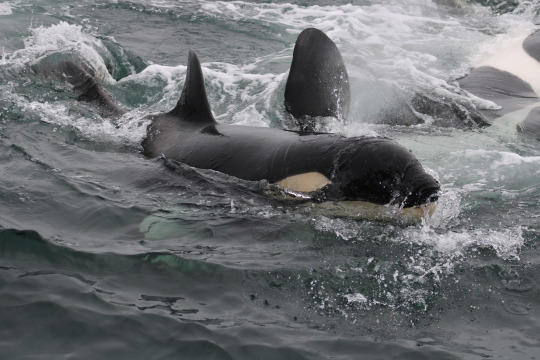
Heya ya'll, here's maybe the best photo I am every going to take in my life.
I was out with the Monterey Bay Whale Watch when we got a chance to observe the CA-150 Bigg's Killer Whale pod after a successful sea lion hunt. The pod consists of one adult male named Jimmy, an enormous adult matriarch named Andi, three other female killer whales, and a total of four calves. The pod was totally showboating, celebrating a successful hunt and engaging in a lot of play behavior like spectacular breaching and spy-hopping . At one point a mother/calf pair engaged in some kind of roll/cuddle behavior where the young calf perched on top of his mom and rolled along while their mother pushed them along upside down directly towards the boat. I was in the perfect spot to photograph the sequence and got this once in a lifetime shot.
#killer whale#Bigg's Killer Whale#orca#orca whale#marine science#cetacean#ocean#whale calf#CA-150 Pod#whale watching#whale conservation#whales#monterey#Monterey Marine Protected Area#monterey california#baby whale#baby animals#cute animals#Ya'll I was giggling hysterically and almost crying for like the entire hour we were observing the pod.
32 notes
·
View notes
Text

wanted to get my higgs killer whale concept visualized aughh i wanna change a lot still so i kept the ref very nothing even thou ill prob be redrawing it in the future... but seal sammy needs a friend ok heres the concept shet i made on in ms paint months ago to make sure ididnt forget

#higgs the biggs killer whale yea ea yea ok#my art#character based character#death stranding#higgs monaghan#killer whale#orca#dude how the FUCK do you draw porpoises#UGHHHHHH
7 notes
·
View notes
Text
You guys want Orca pun tea that helps fund orca conservation and research in the Salish Sea? (The names are, of course, based on the names of these three bull Transient orcas, all with big reputations)
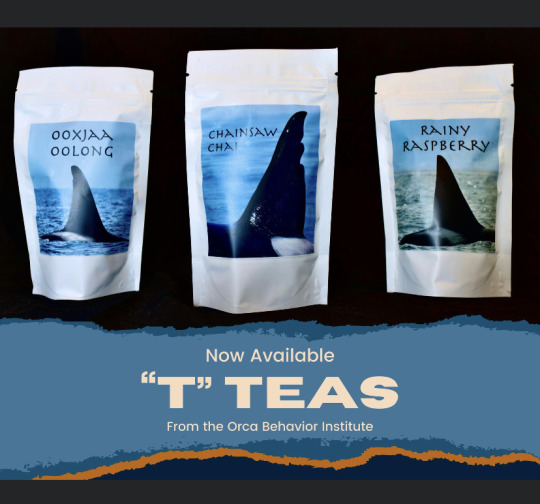
#orca#marine biology#marine conservation#transient orca#transient killer whales#Biggs killer whales#Ooxjaa#chainsaw#rainy
82 notes
·
View notes
Text

CA 140 Emma
Transient Killer whale (orcinus orca)
taken off the coast of California
The killer whale populations here are studied by local scientists and so many are known/familiar individuals! This is just the dorsal fin of one but she is one of the most frequently seen and easily recognized matriarchs - CA 140 Emma. To identify a killer whale they use their eye patch and dorsal fin and Emma has this double notch in her dorsal resembling an m or E. If I recall she’s even in some nature documentaries (specifically ones where they hunt gray whales since she’s well known for these hunts).
#orca#killer whale#Emma#Biggs killer whale#Biggs orca#transient orca#transient killer whale#photography#wildlife photography#canon 6d mark ii
21 notes
·
View notes
Text
It's so hilariously American-centric to say that
This (Southern Resident)
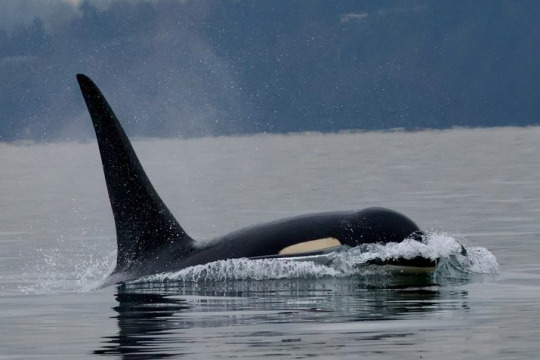
Is a distinct species from this (Transient/Bigg's):
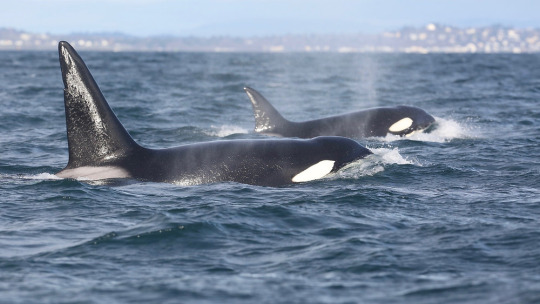
-
But that means that this (Bremer Canyon offshore ecotype)
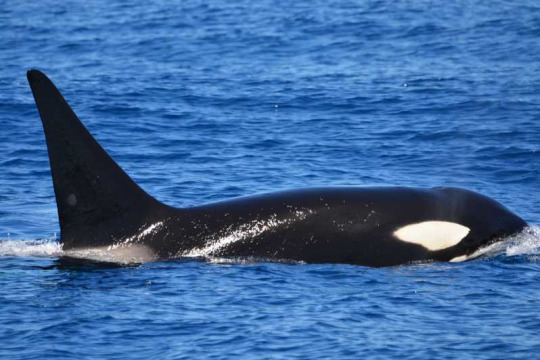
is the same species as this (Type D Antarctic ecotype)

And is also the same species as this (Icelandic ecotype)
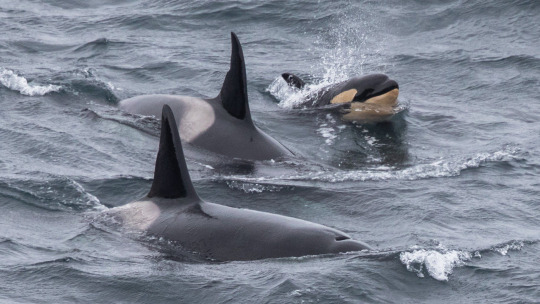
I get we have a lot of data on Residents and Transient/Bigg's but it's going to get real confusing if we start defining killer whale ecotypes as entirely different species - especially if the most distinctly different ecotypes are being ignored.
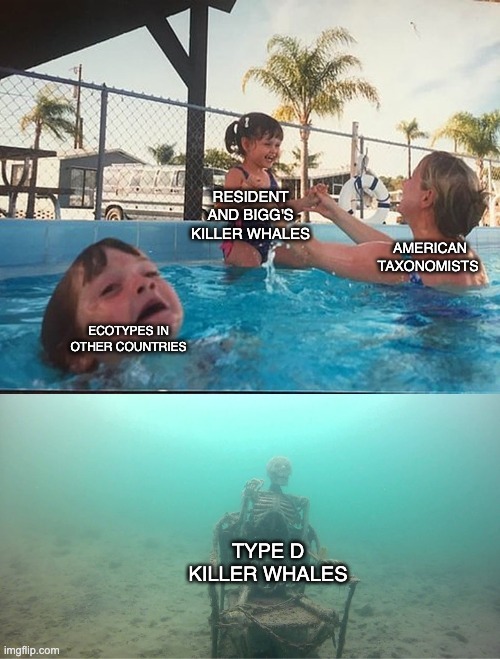
Edit: I am mostly joking here and I get that by defining them as a separate species, they could be considered more for protections like the endangered Southern Residents. However I feel like they will still be referred to as killer whales by the general public, who will be going off visual rather than the other genomic evidence provided in the paper.
It's not a huge drama, really. It's just going to be interesting to see if every ecotype is going to be given its own species classification and how that relates to the conversation about culture transmission and hybridisation in killer whales as well.
#taxonomy is so weird#also I still feel weird about calling them Bigg's - calling animals after the people who discovered them feels colonialist to me#they existed before you discovered them you don't own them#idk people are weird about their killer whales in the Pacific Northwest too#killer whale#orca
11 notes
·
View notes
Photo
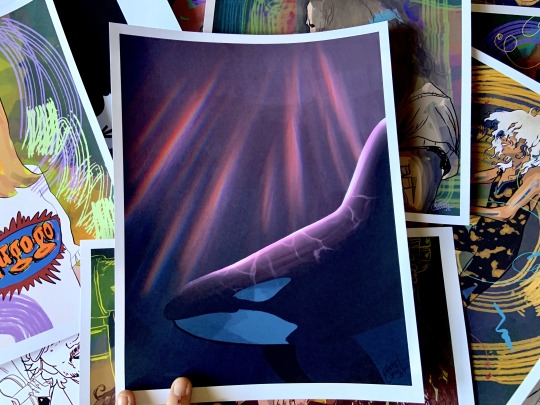

New prints and stickers are up in my shops! I got some Loving Orca prints and holographic art stickers on etsy and a whole bunch’a other stuff on redbubble and threadless. Check em out, if ya wanna.
#orca#srkw#Biggs orca#killer whale#art#illustration#painting#digital art#art prints#stickers#holographic stickers#shop#artist#foolstemper
5 notes
·
View notes
Text
I guess I should make an introduction.
I am a naturalist living up in the San Juan Islands, a small and still somewhat obscure corner of Washington State. While my naturalist work is taking a back seat this year, I still consider myself as one and am always looking for ways to use my skills to continue promoting environmental education. I especially like trees, birds, and whales.
I have been a political activist since the time of Obama’s presidency, and I have grown from a center-left moderate to a socialist leftist in the last fifteen years. I believe utopia is possible when reparations are made to marginalized peoples, when education is properly funded and supported, when food is not wasted and is made available to all without reservation or commodification (miss me with your gold-leaf truffle Wagyu burgers with black garlic, diamond-encrusted fries), when housing and healthcare is a right, and when we live as a part of nature and not lording over nature.
I was a part of the Dragon Age fandom on here when Inquisition came out, but left when the major content censoring came down in 2016(?) and rendered my page inaccessible to the rest of the website. I am back because I need to get off of Meta - and this is the best tool so far to keep me specifically off Instagram. My old fanfics prominently featured Alistair, Fenris, Cullen, and if I were to write Veilguard fanfic now, Davrin (what can I say? I love a soft warrior boyfriend). Tumblr was a huge part of unlearning a lot of my biases and of radicalizing my personal politics (radicalizing in the traditional sense of becoming a more left-leaning person), and I am excited to be back here, to learn and grow as I did then, and to maybe even get back into writing fanfic…
Hope this all goes well, and that the corporate overlord-wannabes leave this site alone…
#salish sea#san juan islands#dragon age#personal intro#bigg's killer whales#living life in a post meta world#tumblr refugee
0 notes
Text
It is worth pointing out that the authors aren’t claiming that the Bigg’s and Eastern North Pacific residents are the most different killer whales in the world and that the rest of Orcinus orca is one thing — just that these two are the best-studied so providing evidence of their distinctness is most straightforward. In their cladogram (which I confess I don’t remember what its basis is — mtDNA or what) the Bigg’s and ENP residents are very well separated, with Bigg’s being pretty much the basalmost member of the group apart from subantarctic “Type D”.
So what we’re seeing here is a breaking of the ice — if this meets with general acceptance, I think we’ll see a quickening of the recognition of the other ecotypes as new species as well. The cladogram in this study showed both Antarctic Type Bs to form a clade with Type C, so that would be an interesting case — a single species with three subspecies, two species with one monotypic and one with two subspecies, or three species…

🚨 A team of scientists, led by Phil Morin of NOAA, have published a new paper formally proposing two “new” species of killer whale: Bigg’s killer whales (Orcinus rectipinna) and resident killer whales (Orcinus ater).🚨
More than fifty years ago, researchers began studying the killer whales found off the west coast of North America. One keen-eyed scientist, Dr. Michael Bigg, noticed that there appeared to be two kinds of killer whales: a smaller, more gregarious form that fed on fish and a larger, stealthier type that fed on marine mammals. He and his colleagues dubbed the fish-eaters “resident” killer whales and the mammal-eaters “transient” killer whales (who were later renamed Bigg’s killer whales in his honor).
Two female Bigg’s killer whales in Washington (top) and a male and female resident killer whale in Alaska (bottom)
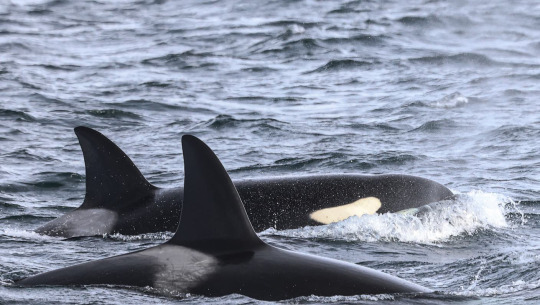

Many decades later, scientists have been hard at work trying to resolve whether or not these two forms are different species. It is not an easy task. This requires a thorough investigation into many factors, including evolutionary history, genetics, morphology, ecology, and behavior. In this paper, the researchers lay out all of the evidence and conclude that these two forms warrant elevation to species status.
As newly proposed species, both need new scientific names. There have been numerous killer whale species proposed and described in the past by other naturalists and researchers, including those in the North Pacific. Unfortunately, there are no type specimens— individual specimens upon which the first descriptions of a species are based—available for killer whales previously described from the North Pacific, so the researchers were left to examine drawings and illustrations of killer whales in the North Pacific in the late 1800s by Scammon and Cope.
The authors propose “Orcinus rectipinnus” for Bigg’s killer whales and “Orcinus ater” for resident killer whales. “Rectipinnus” presumably refers to tall dorsal fins, and “ater” means “black” or “dark” in Latin. Of note is the fact that a female killer whale from California originally examined and described by Scammon as “Orcinus rectipinnus” had seals in her stomach, suggesting she was a Bigg’s killer whale.
In addition, the authors note they are consulting with Indigenous tribes for a new common name for resident killer whales.
What’s next? In marine mammal biology, proposed taxonomic changes are reviewed by the Society for Marine Mammalogy’s taxonomy committee. If accepted, these species revisions become “official.” This has been an eagerly awaited paper by many in the field of killer whale biology and it is a great accomplishment, made possible by decades of research by scientists around the world.
A big thank you to lead author Phil Morin for letting me preview the manuscript and for answering my numerous questions in preparation for this post!
Read the paper here!
#finally!!!#very exciting first steps on a big taxonomic revision that needs to happen!#Orcinus rectipinnus#Bigg’s killer whale#Orcinus ater#resident killer whale#cetacean#marine mammal#natural history
591 notes
·
View notes
Text

Transient Killer Whales art print poster. Available at cetek.etsy.com.
#orca#transient#bigg's orca#killer whale#artwork#whales#pacific northwest#orcinus orca#cetacea#dolphin
1 note
·
View note
Text

Steller's sea cow - a recently extinct giant sirenian, related to modern dugongs and manatees. They went extinct in XVIII century, but their exctinction wasn't just because of europeans, we know that the last populations near Kamchatka were already on the brink of exctinction.

These huge animals could reach 9 metres in length and weight 10 tonnes, making them the largest aquatic non-cetacean mammal we know. They were algae eaters, feeding on kelp. Unlike modern sirenians, they didn't have teeth and used two keratin plates in their mouths for chewing. After feeding, according to Steller they'd lie on their backs and nap. Steller also observed an interesting mutualistic behaviour between sea cows and gulls (probably slaty-backed gulls), as these birds would eat parasites from the sea cow's back, like oxpeckers and rhinos.

The slaty-backed gull is one of the seabirds native to areas where sea cows used to live, and while we can't be sure which species of seabird fed on parasites of these large mammals, the opportunistic nature of seagulls makes them good contenders for the spot.

Despite their appearance, sea cows weren't stupid animals, they lived in large herds, looked after their young and were probably monogamous. Steller observed that they kept their calves in the middle of the herd or near the shore. This could have been caused by their predators.

Killer whales, specifically Bigg's killer whales, which are known to hunt other mammals, are the most likely predators of Steller's sea cow, apart from humans. While they might have trouble killing a large cow, especially in a herd, a small calf might be a meal worth the risk.

#3d#steller's sea cow#sirenian#sea cow#killer whale#orca#seagull#blender#lowpoly#paleoart#paleontology#nature#animals
148 notes
·
View notes
Text

Bigg's killer whale Orcinus orca
Observed by anudibranchmom, CC BY-NC
#Orcinus orca#Bigg's killer whale#Cetacea#Delphinidae#cetacean#dolphin#whale#North America#United States#California#Pacific Ocean#Monterey Bay
115 notes
·
View notes
Text

Orca acrobatics 💦 Captured here is a member of the T002 pod - a family of five transient orcas. Her nickname is Tasu and she was born in 1989. She has 2 sons, 2 daughters, and is a mighty good backflipper.
Transient killer whales, also known as Bigg's killer whales, travel the waters from southeast Alaska to Southern California!
📸: Kristian Gillies Photography
174 notes
·
View notes
Text
Toxic chemicals produced from oil emissions and wildfire smoke have been found in muscle and liver samples from Southern Resident killer whales and Bigg's killer whales. A study published today in Scientific Reports is the first to find polycyclic aromatic hydrocarbons (PAHs) in orcas off the coast of British Columbia, as well as in utero transfer of the chemicals from mother to fetus.
Continue Reading.
#Science#Enviroment#Animals#Ecology#Climate Change#Global Warming#Pollution#Killer Whales#Orcas#Whales
123 notes
·
View notes
Text

Bigg’s killer whale looking for a sea lion snack in the Salish Sea 02/08/24.
Photo from the Center for Whale Research
14 notes
·
View notes
Text

CA140C Ben
taken in the Pacific Ocean off the coast of California
status: protected
I posted Emma before but this is the tall dorsal fin of her son, CA140C Ben! Female Killer whales in the Biggs population have a dorsal fin that usually is 2 - 3 feet tall but males can sport a giant 6 foot dorsal fin. Which, if you were wondering, yes they do wobble when they surface (there isn’t bone in it). In captivity male killer whales often have a collapsed dorsal fin - this is due to the lack of free swimming that allows the proper development of the musculature that supports such a tall structure (so yes, tanks too small and not at all meeting the needs of such large, wild animals).
#killer whale#orca#orca whale#whale watch#photography#photo#animal#canon#nature#canon 6d mark ii#california#wildlife photography#whale watching#ca140c Ben#transient orca#Biggs orca
3 notes
·
View notes